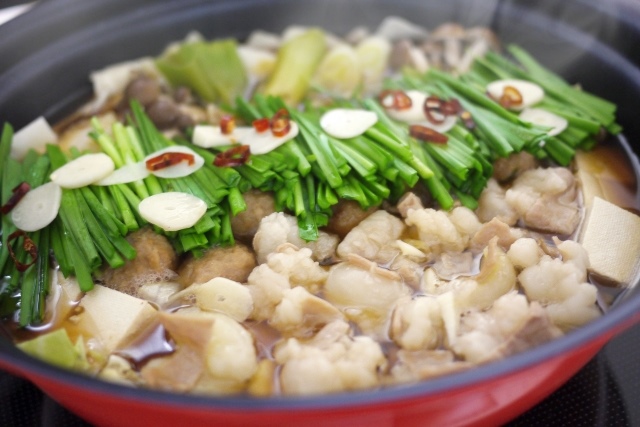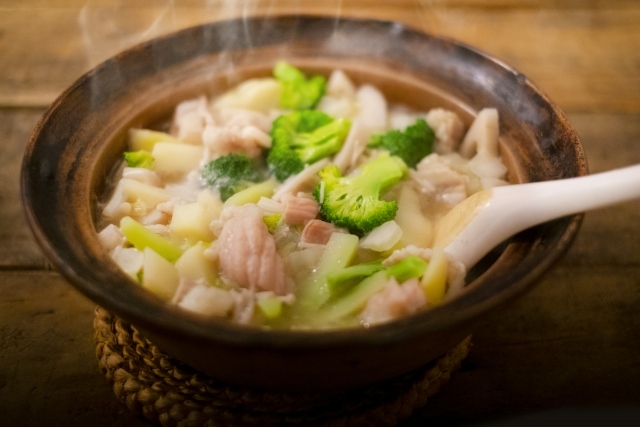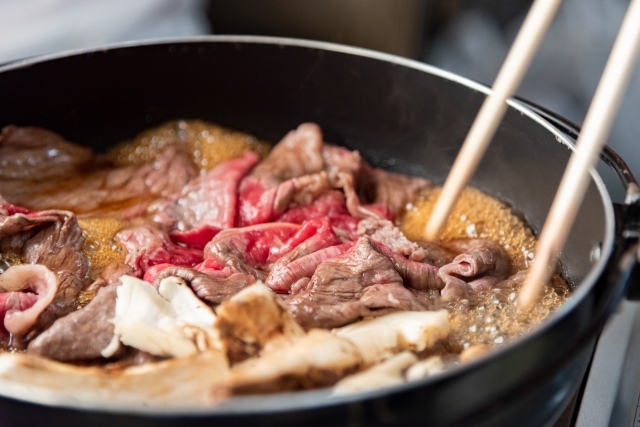Basic Information
Japanese hot pot cuisine is a dish where various ingredients are simmered in a broth. The broth, made from kelp and bonito flakes, is flavored with soy sauce or miso. Thinly sliced beef or pork, vegetables, and tofu are added. Eating together deepens the bonds with family and friends, making it especially popular during the cold seasons.
Sukiyaki
Sukiyaki is a representative Japanese meat dish. Thinly sliced beef, leek, Chinese cabbage, chrysanthemum, shiitake mushrooms, grilled tofu, konjac, and shirataki noodles are cooked in a pot. It’s typical to dip the ingredients in a raw beaten egg before eating. The seasoning is done with soy sauce, sugar, sake, and mirin. The first record of eating Sukiyaki was in 1854 in Nagasaki, Kyushu, but at the time it was not a common dish as the custom of eating beef was not widespread. Later, in the Meiji era, the custom of eating beef spread among the common people, and Sukiyaki became widely popular. Japanese Wagyu is different from foreign beef, characterized by its high fat content and soft meat quality, making it popular albeit expensive.
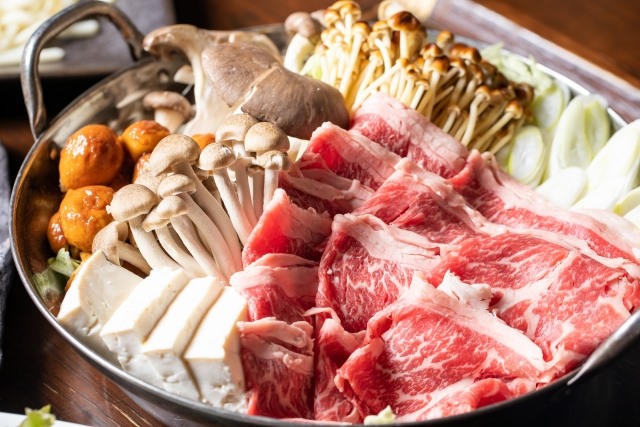
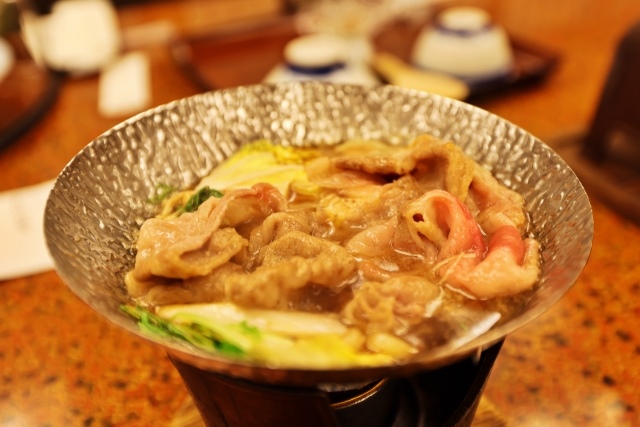
Shabushabu
Shabushabu is a dish where thinly sliced meat is cooked by dipping it in hot water or soup in a pot on the table, then eaten with a dipping sauce. Citrus-based Ponzu sauce or sesame sauce is commonly used as a dipping sauce. Its refreshing flavor is a characteristic of this popular meat dish enjoyed by all ages.
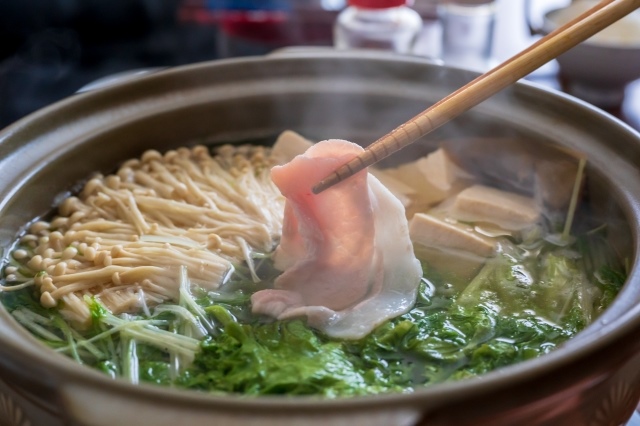
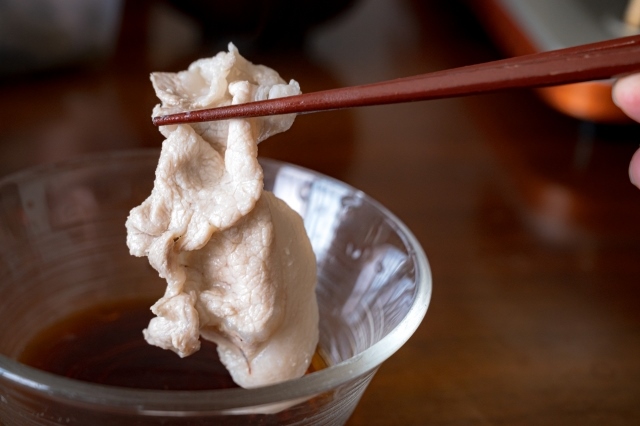
Kiritanpo
Kiritanpo is a local dish from Akita Prefecture in the Tohoku region. Mochi shaped into a stick is grilled, then removed from the stick and cooked in a chicken broth soup with chicken. Hinai chicken, a specialty of Akita Prefecture, is often used. This dish is said to have been originally eaten among hunters.
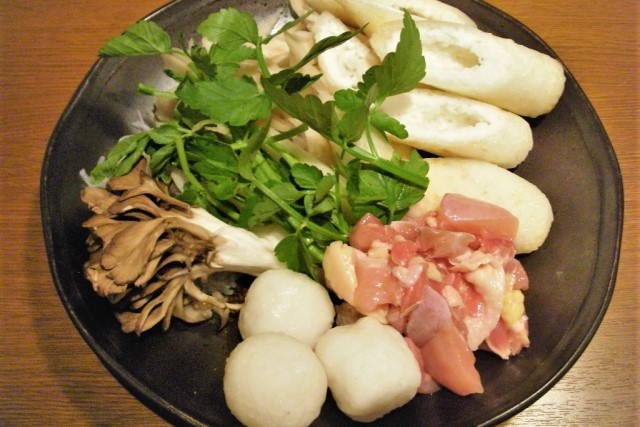
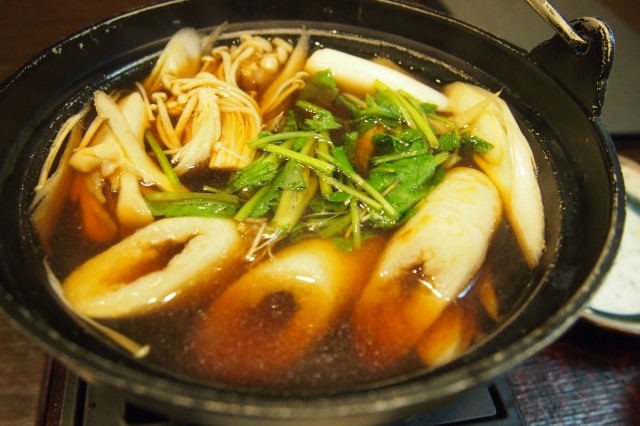
Botan-nabe
Botan-nabe is a hot pot dish using wild boar meat, mainly a local dish in mountainous regions. Wild boar meat, mushrooms, potatoes, konjac, and tofu are cooked in a miso-based or soy-based soup. It gets its name from arranging the thinly sliced wild boar meat like a peony flower in the pot.
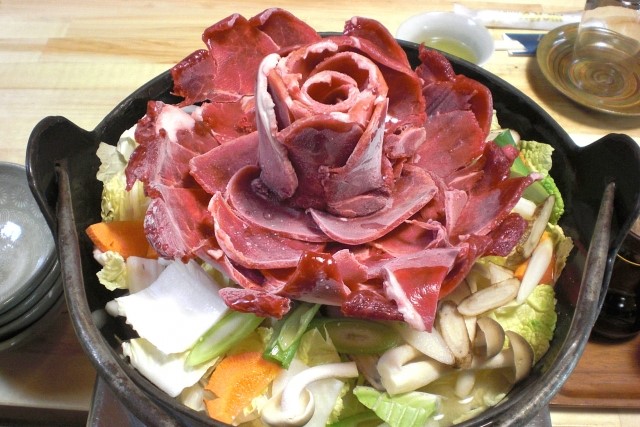
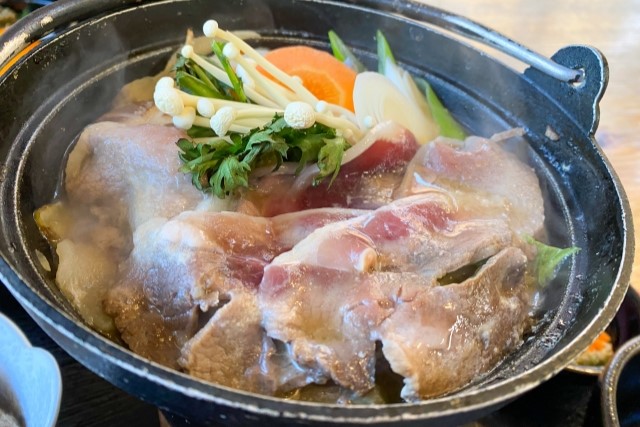
Sakura-nabe
Sakura-nabe is a hot pot dish where horse meat is cooked in a style similar to Sukiyaki. As horse meat is not commonly distributed, it’s a regional specialty dish in horse meat producing regions such as Aomori, Nagano, and Kumamoto Prefectures. There are also restaurants in areas like Asakusa in Tokyo offering Sakura-nabe where horse meat is cooked in a miso-based soup, a traditional dish of Tokyo.
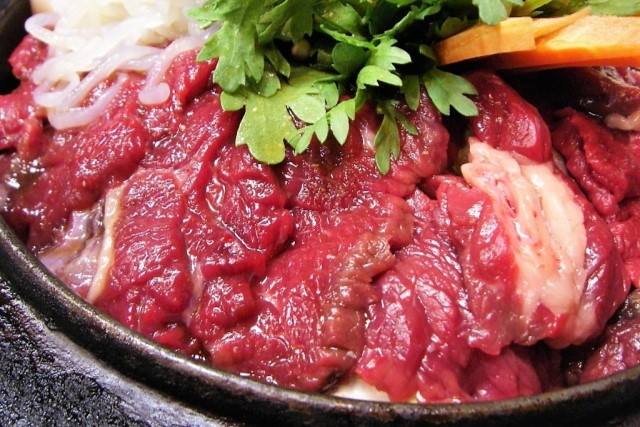
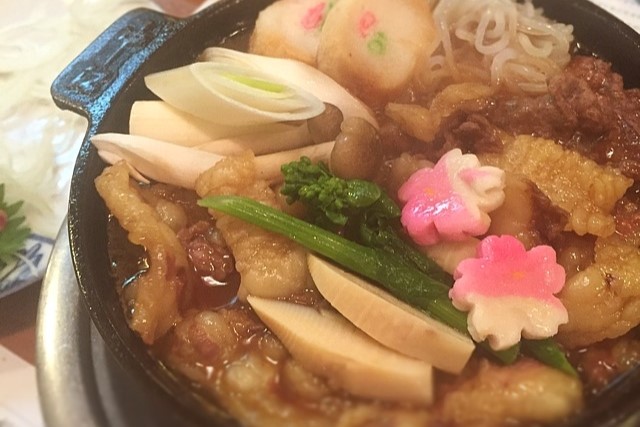
Chanko-nabe
Chanko-nabe is a hot pot dish mainly eaten by sumo wrestlers. The flavoring varies from miso-based, soy-based to salt-based, and ingredients such as meatballs, Chinese cabbage, and udon are used. There are numerous restaurants serving Chanko-nabe in Ryogoku, Tokyo, the holy land of sumo.
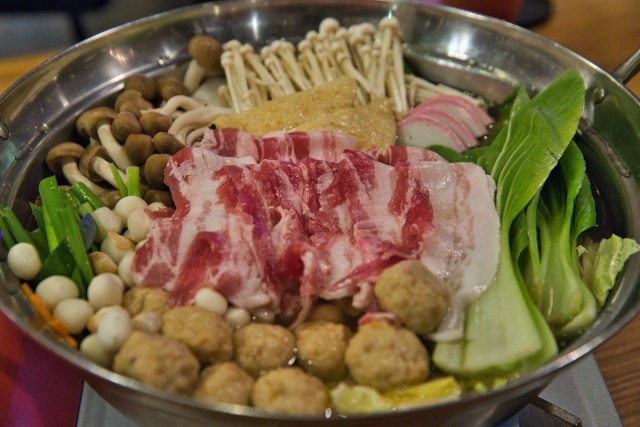
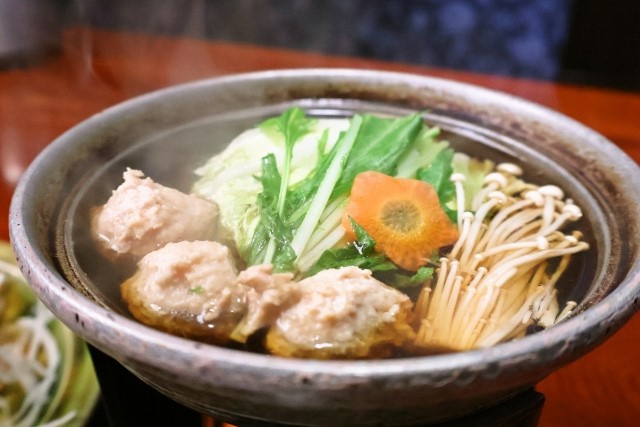
Motsu-nabe
Motsu-nabe is a hot pot dish cooked with beef or pork intestines, leek, cabbage, and tofu, a specialty dish of Hakata in Fukuoka Prefecture, Kyushu. The flavoring is either miso-based or soy-based. In the Kansai region, it’s also called Horumon-nabe. Horumon is an Osaka dialect meaning “something to throw away,” and it’s named after the practice of cooking discarded offal in a hot pot.
